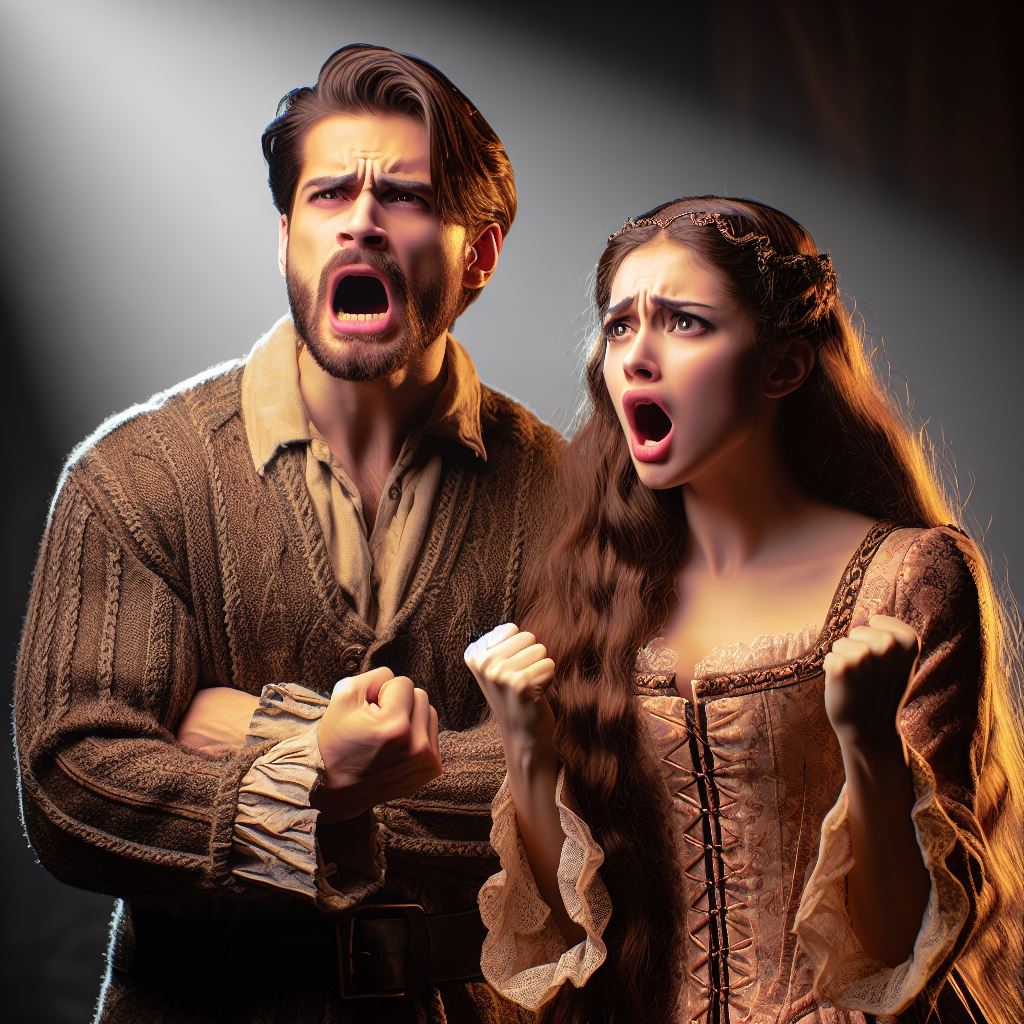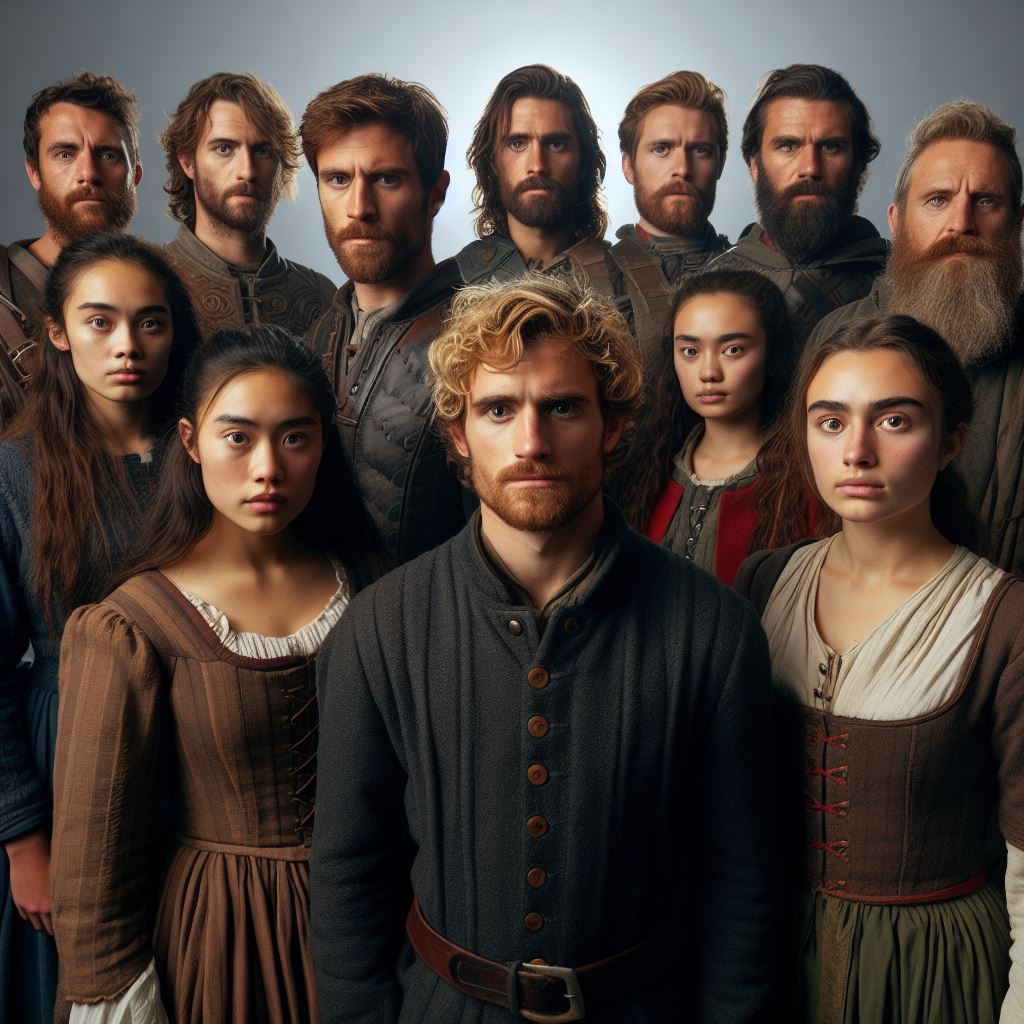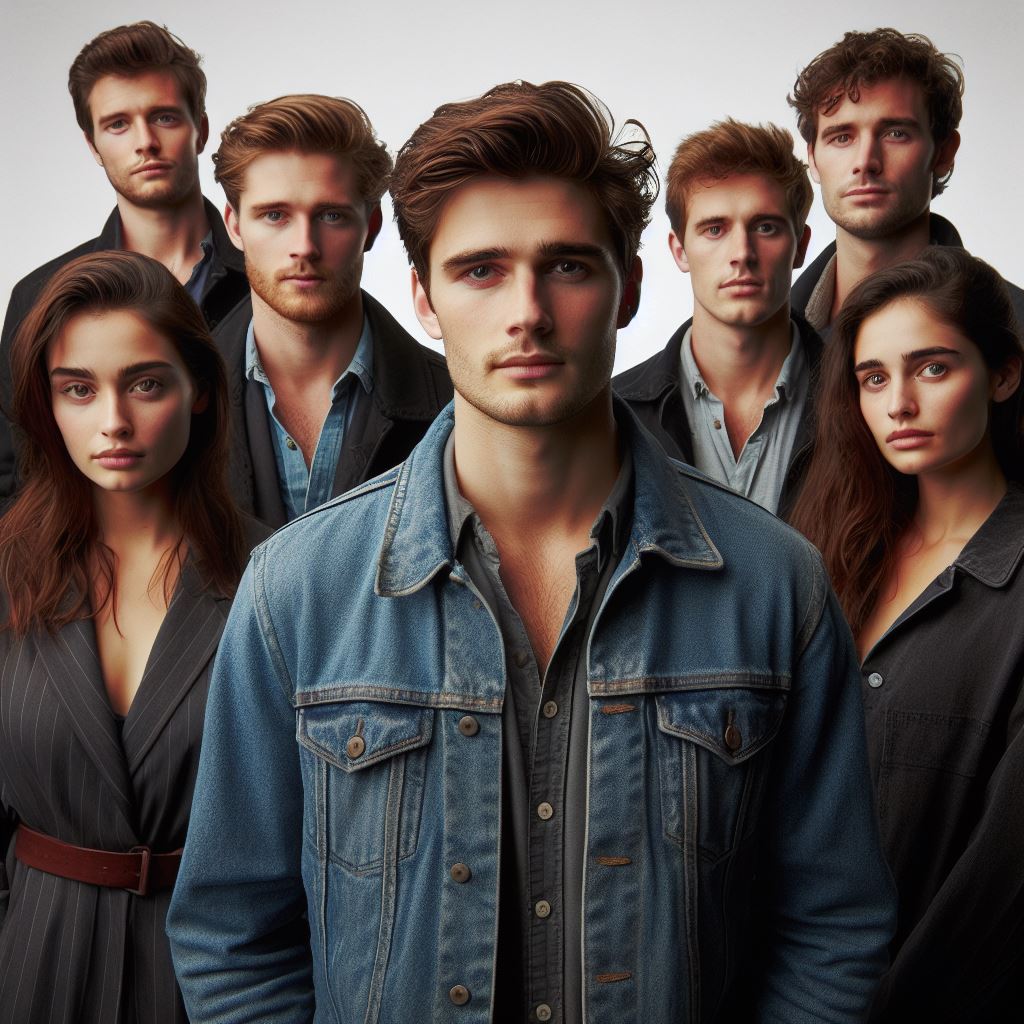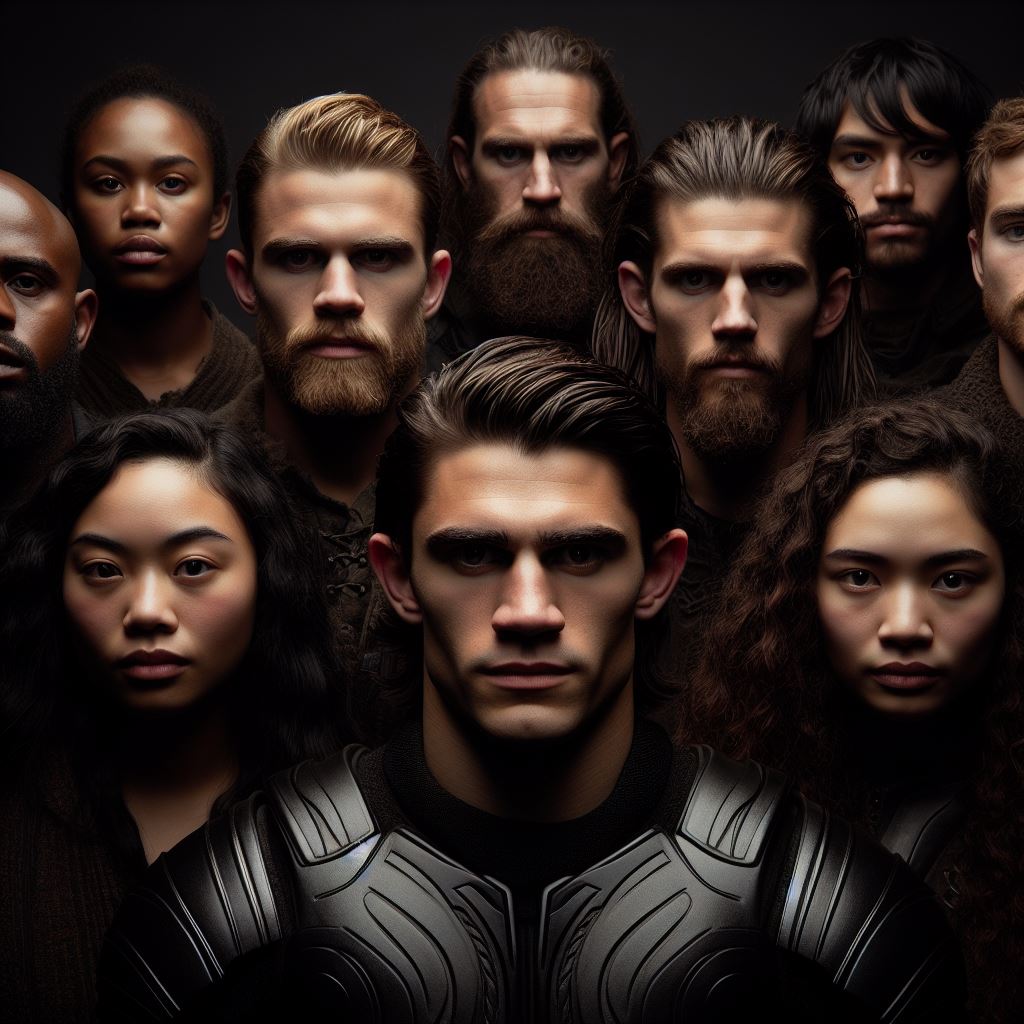Introduction
New Zealand boasts a rich tapestry of iconic acting roles that have left a lasting impression on both local and global audiences.
These roles not only showcase the immense talent of New Zealand actors but also reflect the diverse stories and cultures of the country.
From groundbreaking performances in critically acclaimed films to memorable characters in beloved television series, New Zealand’s acting repertoire continues to captivate audiences worldwide.
One such iconic role is that of Beth Heke, portrayed by Rena Owen in the powerful film “Once Were Warriors.
” Owen’s portrayal of a woman struggling to navigate the complexities of family life in the face of domestic violence resonated deeply with audiences, earning her widespread acclaim.
Another notable performance is Keisha Castle-Hughes’ portrayal of Paikea “Pai” Apirana in “Whale Rider.
” Castle-Hughes’ captivating performance as a young Maori girl striving to fulfill her destiny as a leader earned her an Academy Award nomination, making her the youngest Best Actress nominee in Oscar history at the time.
Additionally, actors like Taika Waititi and Jemaine Clement have made significant contributions to New Zealand’s acting landscape, both on screen and behind the camera.
Waititi’s comedic brilliance in films like “Boy” and “Hunt for the Wilderpeople” has solidified his status as a filmmaking maverick, while Clement’s roles in “Flight of the Conchords” and “What We Do in the Shadows” have garnered him international acclaim.
These iconic acting roles not only showcase the depth and talent of New Zealand actors but also highlight the country’s vibrant storytelling tradition and cultural heritage.
As New Zealand continues to produce groundbreaking films and television series, its actors are poised to leave an indelible mark on the global stage for years to come.
The Lord of the Rings Trilogy
The Lord of the Rings trilogy holds significant importance for New Zealand’s film industry.
Not only did it bring international recognition and attention to the country, but it also showcased the talent of actors like Sir Ian McKellen, Martin Freeman, and Andy Serkis.
One of the most important aspects of the trilogy is the way it highlighted New Zealand’s stunning landscapes.
From the vast plains of Rohan to the majestic peaks of the Misty Mountains, the films captured the beauty of the country like never before.
Sir Ian McKellen as Gandalf
Sir Ian McKellen’s portrayal of Gandalf in The Lord of the Rings trilogy remains one of the most iconic roles in the history of cinema.
His commanding presence and nuanced performance brought the wise and powerful wizard to life.
McKellen’s dedication to the role and his understanding of the character’s depth and complexity is evident in every scene he appears in.
His Gandalf became the symbol of wisdom, hope, and guidance for both the characters and the audience.
Martin Freeman as Bilbo Baggins
Martin Freeman’s portrayal of Bilbo Baggins in The Hobbit trilogy, a prequel to The Lord of the Rings, was equally remarkable.
He captured the essence of the reluctant hero with his endearing and sometimes comical performance.
Freeman’s portrayal of Bilbo Baggins perfectly captured the character’s growth and transformation throughout the trilogy.
From a timid and cautious hobbit to a brave and selfless adventurer, Freeman brought depth and emotion to the role.
Andy Serkis as Gollum
Andy Serkis’s groundbreaking performance as Gollum, a complex and tortured creature, was a highlight of The Lord of the Rings trilogy.
Through motion capture technology, Serkis added a layer of realism and depth to the character.
Serkis’s portrayal of Gollum was both terrifying and sympathetic.
He brought the conflicted nature of the character to life, showcasing the internal struggle between his obsession with the One Ring and his desire for redemption.
The success of The Lord of the Rings trilogy not only put New Zealand on the map as a filming location but also boosted the country’s economy.
It created job opportunities for local actors, crew members, and businesses, leading to the growth of the film industry.
The trilogy also had a profound impact on tourism in New Zealand.
The stunning landscapes featured in the films attracted millions of visitors who wanted to experience the beauty of Middle-earth firsthand.
This influx of tourists boosted the country’s economy and helped establish New Zealand as a top travel destination.
Basically The Lord of the Rings trilogy has had a monumental impact on New Zealand’s film industry.
It showcased the talent of actors like Sir Ian McKellen, Martin Freeman, and Andy Serkis while highlighting the country’s breathtaking landscapes.
The success of the films not only brought international recognition but also boosted the local economy and tourism industry.
The trilogy will forever hold a special place in the hearts of both New Zealanders and fans around the world.
Read: NZ Artists’ Paths: Education to Success
The Hobbit Trilogy
New Zealand’s involvement in the Middle-earth franchise continued with The Hobbit Trilogy
The Lord of the Rings trilogy brought global attention to New Zealand as the stunning backdrop for the mythical world of Middle-earth.
With its sweeping landscapes, ancient forests, and majestic mountains, it was no wonder that the filmmakers chose this country as the perfect setting for the epic tale.
However, the magic did not end there.
New Zealand’s involvement in the Middle-earth franchise continued with The Hobbit Trilogy, further solidifying its status as a hub for cinematic excellence.
The Hobbit Trilogy, directed by visionary filmmaker Peter Jackson, introduced audiences to a new chapter in the Middle-earth saga.
While the trilogy received mixed reviews from critics, it undeniably showcased New Zealand’s artistic prowess and further enhanced its reputation as a go-to destination for filmmakers worldwide.
Films featured notable actors like Richard Armitage, Benedict Cumberbatch, and Evangeline Lilly
One of the highlights of The Hobbit Trilogy was the exceptional performances by the cast, which included notable actors such as Richard Armitage, Benedict Cumberbatch, and Evangeline Lilly.
Armitage, who portrayed the heroic dwarf Thorin Oakenshield, delivered a captivating performance that resonated with audiences.
Benedict Cumberbatch, meanwhile, lent his voice and motion-capture prowess to the terrifying dragon Smaug, bringing the imposing creature to life.
Evangeline Lilly brought strength and grace to her role as Tauriel, a Woodland Elf, adding a new layer to the story.
New Zealand’s landscapes and craftsmanship were recognized in the films
But it wasn’t just the actors who stole the show.
New Zealand’s breathtaking landscapes played a vital role in capturing the essence of Middle-earth.
From the rolling hills of the Shire to the towering peaks of the Misty Mountains, each location transported viewers to a world of magic and wonder.
The craftsmanship of the New Zealand-based crew was also showcased in the intricate set designs, costumes, and props, contributing to the authenticity and immersive experience of the films.
The stunning scenery of New Zealand undoubtedly played a significant part in the success of The Hobbit Trilogy.
Its diverse landscapes provided the perfect canvas for the filmmakers to bring J.R.R.
Tolkien’s imaginative world to life.
The lush forests of Fiordland National Park, the rugged beauty of the Southern Alps, and the surreal glowworm caves of Waitomo all added to the enchantment of the films and showcased the country’s natural wonders.
Moreover, the craftsmanship that went into creating the fantastical world of Middle-earth further solidified New Zealand’s reputation as a hub of creativity and innovation.
The attention to detail in the sets, costumes, and props demonstrated the country’s dedication to the craft of filmmaking.
Countless artisans and technicians worked tirelessly to bring Tolkien’s vision to life, cementing New Zealand’s place as a center for excellence in the film industry.
In review, The Hobbit Trilogy continued New Zealand’s involvement in the Middle-earth franchise, showcasing the country’s extraordinary landscapes and the exceptional talents of actors such as Richard Armitage, Benedict Cumberbatch, and Evangeline Lilly.
The films further solidified New Zealand’s reputation as a hub of artistic excellence and craftsmanship, offering a compelling and immersive experience for both fans and casual viewers alike.
As the journey through Middle-earth continues, New Zealand remains an integral part of this iconic cinematic universe.
Read: Grants for NZ Musicians: A Guide
Whale Rider
Overview of the film’s plot and cultural significance
Released in 2002, Whale Rider is a film that showcases the rich Maori culture of New Zealand.
The movie follows a young girl named Paikea, played by Keisha Castle-Hughes, as she battles against traditional gender roles and societal expectations.
The plot revolves around Paikea’s desire to become the next leader of her Maori community, despite her grandfather’s refusal to accept her because she is a girl.
The film beautifully captures the struggle and determination of this young girl, making it a powerful story about identity, heritage, and breaking barriers.
Focus on Keisha Castle-Hughes’ breakthrough performance as Paikea
Keisha Castle-Hughes’s breakthrough performance as Paikea garnered critical acclaim worldwide.
At only eleven years old, she delivered a captivating portrayal that won the hearts of audiences and earned her a nomination for Best Actress at the Academy Awards.
Her talent and authenticity added depth to the character, making Paikea relatable and inspiring to many.
Whale Rider not only gained recognition for its compelling storyline and stellar performances but also for shedding light on New Zealand’s Maori culture.
The film showcased various Maori traditions, language, and spiritual beliefs, providing an authentic representation of Maori life to a global audience.
How the film put New Zealand’s Maori culture in the spotlight
This portrayal of Maori culture had a significant impact on both national and international levels.
It brought attention to the rich history and traditions of the Maori people, fostering a sense of pride and appreciation within New Zealand.
The film also sparked curiosity and admiration from people around the world, leading to a greater understanding and appreciation for Maori culture.
One of the film’s standout scenes involves Paikea attempting to ride a whale, a task traditionally reserved for men.
This powerful moment symbolizes her defiance of societal norms and her determination to prove herself.
It represents the spirit of resilience and strength that resonates with audiences globally.
Whale Rider’s success not only solidified its place in New Zealand cinema but also opened doors for more cultural representation in the industry.
It inspired a new generation of filmmakers to explore their own heritage and tell their unique stories, ultimately diversifying the narratives on screen.
Today, Whale Rider remains an important touchstone in New Zealand’s cinematic history.
Its impact goes beyond entertainment, influencing discussions about cultural preservation and the recognition of indigenous voices.
The film continues to be celebrated for its representation, its message of empowerment, and its ability to foster cross-cultural understanding.
In short, Whale Rider is a film that holds immense cultural significance for New Zealand.
Through its compelling storyline, Keisha Castle-Hughes’s breakthrough performance, and its spotlight on Maori culture, the movie has become a symbol of empowerment and representation.
It paved the way for future films to honor and showcase New Zealand’s diverse cultural heritage.
Read: Women in NZ Music: Rising Stars

Once Were Warriors
Once Were Warriors is a film that delves into the dark portrayal of New Zealand’s domestic violence issue.
Personalized Career Consulting
Unlock your potential with expert career advice tailored to your goals. Get personalized guidance and actionable steps toward your dream career in New Zealand.
Get StartedDirected by Lee Tamahori, the movie was released in 1994 and had a profound impact on both the audience and the country’s filmmaking industry.
Introduction to the film’s dark portrayal of New Zealand’s domestic violence issue
Once Were Warriors is a raw and unflinching depiction of the brutal reality faced by many families in New Zealand.
It sheds light on the prevalence of domestic violence and its devastating effects on individuals, relationships, and communities.
The film revolves around the life of the Heke family, particularly the struggles faced by the formidable matriarch, Beth Heke, played by Rena Owen.
Her character is a compelling representation of the women who endure and resist the cycle of abuse.
The performances by Rena Owen and Temuera Morrison
One of the standout aspects of Once Were Warriors is the extraordinary performances delivered by Rena Owen and Temuera Morrison.
Rena Owen brings a raw vulnerability and strength to her portrayal of Beth Heke.
Temuera Morrison, on the other hand, plays Beth’s abusive husband, Jake Heke, with a chilling intensity.
His performance showcases the complexities of a character torn between love, anger, and addiction.
Together, Owen and Morrison’s performances drive home the heartbreaking reality of domestic violence, making Once Were Warriors a truly unforgettable film.
Impact of the film on New Zealand’s social awareness and filmmaking industry
Once Were Warriors had a significant impact on New Zealand’s social awareness regarding domestic violence.
The film sparked discussions and brought attention to an issue that had long been hidden or ignored.
It forced the audience to confront the uncomfortable truth and ignited a national conversation about the need for change.
The film shed a light on the importance of providing support and resources to the victims of domestic violence, both within New Zealand and worldwide.
Furthermore, Once Were Warriors marked a turning point in New Zealand’s filmmaking industry.
It showcased the talent and potential of New Zealand filmmakers, putting them on the international stage.
The success of the film opened doors for other New Zealand films and filmmakers, who now had the opportunity to share their stories and perspectives with a global audience.
Once Were Warriors remains important and influential, impacting New Zealand’s social consciousness and filmmaking landscape with powerful storytelling.
Once Were Warriors testifies film’s power to raise awareness, promote change, and give voice to societal issues.
It is a must-watch for its poignant portrayal of domestic violence and its contribution to New Zealand’s filmmaking legacy.
Read: NZ Music Festivals: Behind Scenes
Boy
The film’s plot and its setting in 1980s rural New Zealand
The film “Boy,” set in rural 1980s New Zealand, revolves around an 11-year-old boy named Boy, who idolizes his absent father, Alamein.
Boy’s world changes when his father returns unexpectedly.
Taika Waititi, the talented filmmaker, holds the dual role of writer and director for this remarkable movie.
“Boy” became a massive success, both commercially and culturally.
It achieved critical acclaim, becoming the highest-grossing New Zealand film of all time upon its release.
The film resonated worldwide primarily due to its portrayal of themes like family, love, and the power of imagination.
The setting of “Boy” in rural New Zealand adds a unique flavor to the film.
The picturesque landscapes and tight-knit community create an authentic backdrop, enhancing the story’s emotional impact.
The film beautifully captures the essence of small-town life, highlighting the struggles and triumphs experienced by its residents.
Taika Waititi’s dual role as the writer and director
Taika Waititi’s influence as the writer and director is evident throughout “Boy.
” He skillfully crafts a narrative that blends humour and heartbreak, leaving audiences deeply moved.
Waititi’s exceptional ability captures childhood innocence and vulnerability, taking viewers on a nostalgic journey to their youth.
Waititi’s choices as a filmmaker showcase his artistic vision.
The film’s cinematography and soundtrack work harmoniously to evoke a sense of nostalgia and longing.
Waititi immerses viewers in his constructed world through vibrant visuals and a carefully curated soundtrack, making it magical and relatable.
Film’s success and cultural relevance
The performances in “Boy” are outstanding, showcasing the immense talent of its ensemble cast.
James Rolleston, in particular, delivers a remarkable performance as the eponymous character, Boy.
He effortlessly captures the complexities of his character, conveying a range of emotions from innocence to disappointment.
An important aspect of “Boy” is its exploration of cultural identity.
It sheds light on the Māori culture of New Zealand, embracing the unique traditions and values of the indigenous people.
This representation adds depth and authenticity to the film, making it a culturally significant piece of New Zealand cinema.
Essentially, “Boy” is a must-watch film that exemplifies the best of New Zealand’s acting roles.
The captivating plot, set in rural New Zealand during the 1980s, and Taika Waititi’s remarkable dual role propel this film.
The success and cultural relevance of “Boy” only underscore its importance and impact on the world of cinema.
Conclusion
In summary, New Zealand birthed numerous iconic acting roles in films, achieving global acclaim and cementing its standing.
New Zealand adeptly showcases its abundant talent pool and distinct cultural heritage to global audiences through cinematic masterpieces.
These roles, ranging from compelling characters to captivating performances, have captivated viewers and contributed significantly to the country’s cinematic legacy.
Portraying diverse narratives and exploring unique themes, New Zealand carves a niche in the global film landscape, captivating audiences.
Furthermore, these films act as powerful ambassadors, inviting the world to appreciate New Zealand’s scenic beauty and vibrant storytelling.
New Zealand’s influence in the film industry grows as its actors and filmmakers leave an indelible mark on cinematic history.
With remarkable talents and dedication, they ensure New Zealand’s prominence in the global film arena, inspiring future storytellers.




